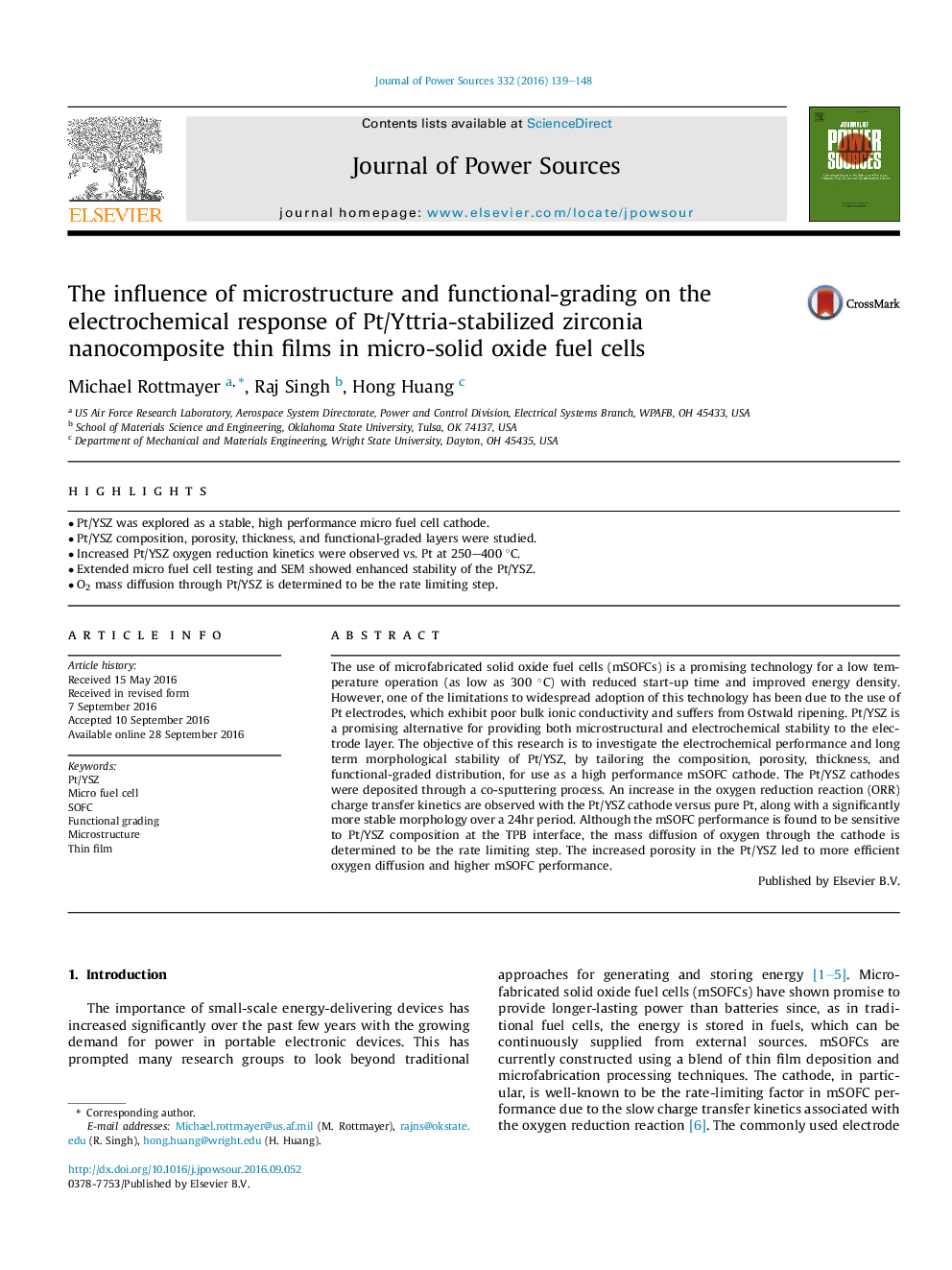| Article ID | Journal | Published Year | Pages | File Type |
|---|---|---|---|---|
| 5150143 | Journal of Power Sources | 2016 | 10 Pages |
Abstract
The use of microfabricated solid oxide fuel cells (mSOFCs) is a promising technology for a low temperature operation (as low as 300 °C) with reduced start-up time and improved energy density. However, one of the limitations to widespread adoption of this technology has been due to the use of Pt electrodes, which exhibit poor bulk ionic conductivity and suffers from Ostwald ripening. Pt/YSZ is a promising alternative for providing both microstructural and electrochemical stability to the electrode layer. The objective of this research is to investigate the electrochemical performance and long term morphological stability of Pt/YSZ, by tailoring the composition, porosity, thickness, and functional-graded distribution, for use as a high performance mSOFC cathode. The Pt/YSZ cathodes were deposited through a co-sputtering process. An increase in the oxygen reduction reaction (ORR) charge transfer kinetics are observed with the Pt/YSZ cathode versus pure Pt, along with a significantly more stable morphology over a 24hr period. Although the mSOFC performance is found to be sensitive to Pt/YSZ composition at the TPB interface, the mass diffusion of oxygen through the cathode is determined to be the rate limiting step. The increased porosity in the Pt/YSZ led to more efficient oxygen diffusion and higher mSOFC performance.
Related Topics
Physical Sciences and Engineering
Chemistry
Electrochemistry
Authors
Michael Rottmayer, Raj Singh, Hong Huang,
